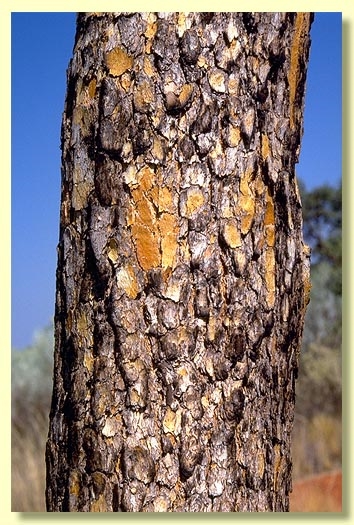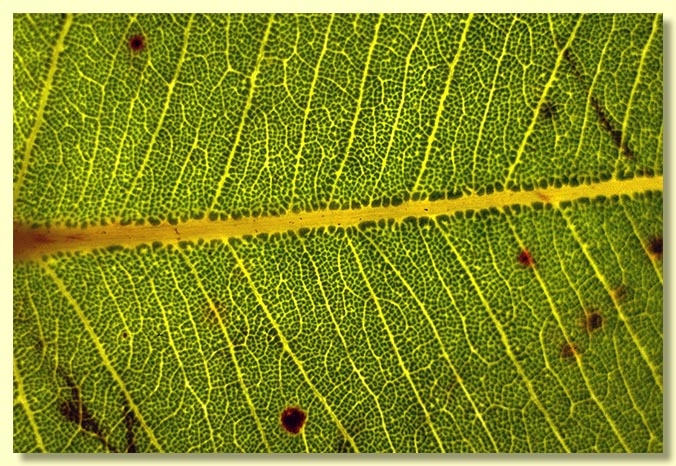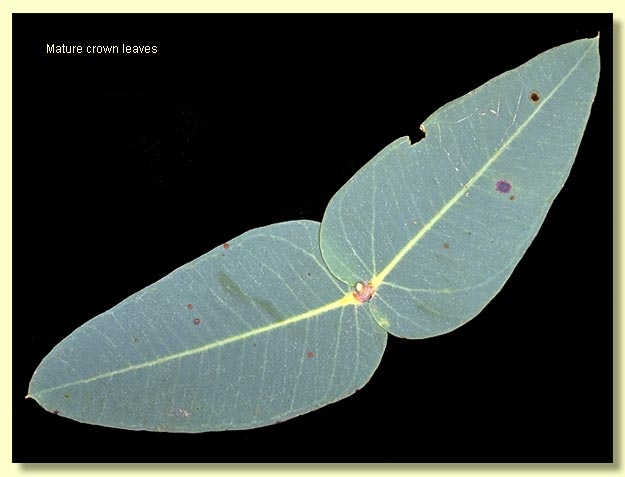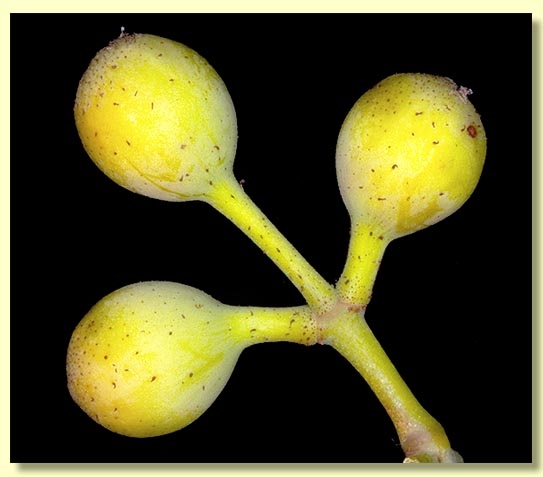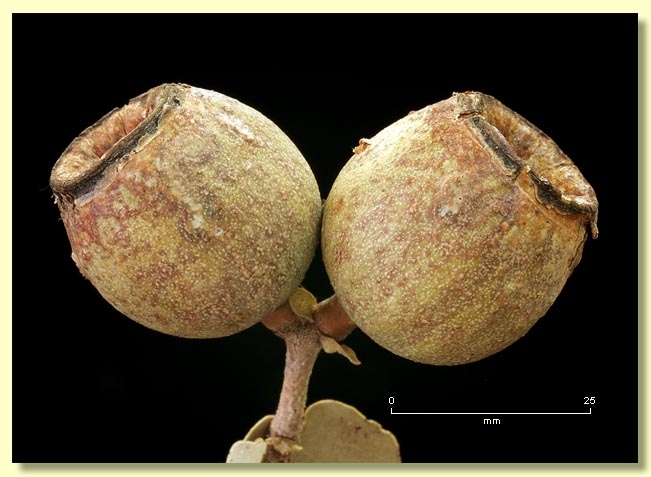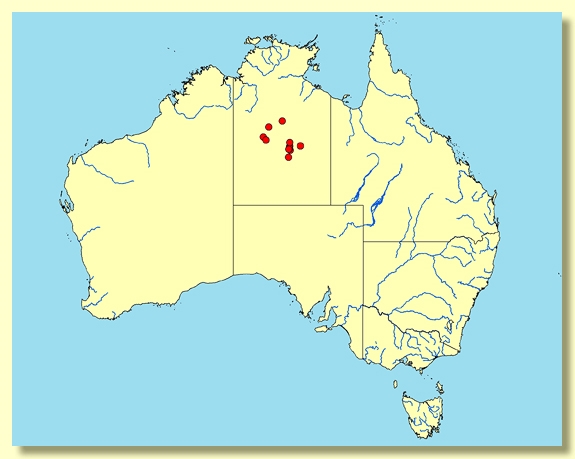Corymbia | Rufaria
Euclid - Online edition
Corymbia sphaerica
Corymbia sphaerica K.D.Hill & L.A.S.Johnson, Telopea 6: 351 (1995).
Tree to 10 m tall or rarely a mallee or bushy shrub to 1 m tall. Forming a lignotuber.
Bark rough to the smallest branches, tessellated, brown to yellowish brown.
Branchlets lack oil glands in the pith; younger branchlets and branchlets with floral buds may be sparsely setose.
Juvenile growth (coppice or field seedlings to 50 cm): stems rounded in cross-section, usually setose; juvenile leaves sessile, opposite, cordate to sub-orbicular, to ca 8 cm long, 5 cm wide, grey-green, sparsely setose (slightly sandpapery) to smooth.
Crown of juvenile leaves, opposite, sessile or very shortly petiolate (petioles to only 0.1 cm long); blade cordate to almost lanceolate, 3–7(10) cm long, 1.5–4.5 cm wide, base amplexicaul, margin entire, apex pointed or rounded and apiculate, concolorous, dull, light green to grey-green or blue-green, side-veins at a wide angle to the midrib (penniveined), reticulation very dense, intramarginal vein present, oil glands apparently absent.
Inflorescence terminal compound, peduncles rounded or angled, 0.4–1.5(3) cm long, buds 3(?7) per umbel, pedicels 0.2–1.2 cm long. Mature buds globular, 1–1.2 cm long, 0.9–1 cm wide, sparsely and shortly setose to smooth, scar absent (both opercula shed together at flowering), operculum rounded, stamens inflexed, all fertile, anthers versatile, dorsifixed, oblong, dehiscing by longitudinal slits, style long and straight, stigma blunt with a fringe of papillae, locules (3)4, vertical ovule rows indistinct on the placentae. Flower colour unknown.
Fruit pedicellate (pedicels 0.3–1.4 cm long), truncate-globose, lacking a neck but may be slightly narrowed at the top, 2.1–3.1 cm long, 2–3.1 cm wide, surface smooth, disc descending vertically, valves (3)4, enclosed.
Seeds brown, 9–16 mm long, ellipsoidal with terminal wing, hilum ventral.
Cultivated seedlings (measured at ca node 10): cotyledons large, reniform; stems rounded in cross-section, usually setose with bristle-glands, rarely glabrous by node10; leaves sessile or with petioles to 0.1 cm, opposite throughout, ovate or cordate, 1.5–6.5 cm long, 0.7–3.4 cm wide, base of leaves rounded but becoming amplexicaul up the stem, apex pointed, scarcely discolorous, dull, green, sparsely setose or glabrous by node 10.
Flowering time unknown.
A small tree, sometimes reduced to a bushy shrub, endemic to the Northern Territory, where it is restricted to the eastern fringe of the Tanami Desert and the Barrow Creek area, preferring red sandy rises. Corymbia sphaerica is easily identified by its tessellated rough bark, crown of opposite, smooth (non-scabrid) leaves, sparsely setose to smooth buds with rounded operculum and large ± globular fruit (2–3.1 cm wide).
C. sphaerica is one of a group of northern bloodwoods with rough bark and opposite leaves in the crown, viz. C. setosa, C. dunlopiana, C. chartacea, C. papillosa, C. deserticola (with two subspecies), C. zygophylla, C. pachycarpa and C. cadophora (with two subspecies). The species in this group most likely to be confused with C. sphaerica are C. deserticola subsp. mesogeotica, which differs in having fruit only 0.8–1.4 cm wide and which occurs from Tennant Creek west to the Great Sandy Desert; and C. setosa, which has prominently setose buds and slightly smaller, globular to urceolate fruit 1.3–2.5 cm wide, and occurs east from Tennant Creek through the Barkly Tableland into Queensland. Another species, C. pachycarpa, occurs further to the north-west from the northern fringes of the Great Sandy Desert and Tanami Desert north as far as Halls Creek and Wave Hill, and differs from C. sphaerica in the prominently setose buds with beaked operculum and more urceolate to barrel-shaped fruit. Two species, C. deserticola subsp. deserticola and C. zygophylla, are restricted to Western Australia and occur in the Pilbara and Broome – Derby – Fitzroy Crossing areas respectively. The remaining species in this group are geographically more northerly in distribution in monsoonal areas.
MORE ABOUT CORYMBIA
MORE ABOUT RED BLOODWOODS
Corymbia sphaerica: Greek sphaera, sphere, referring to the bud and fruit shape.


